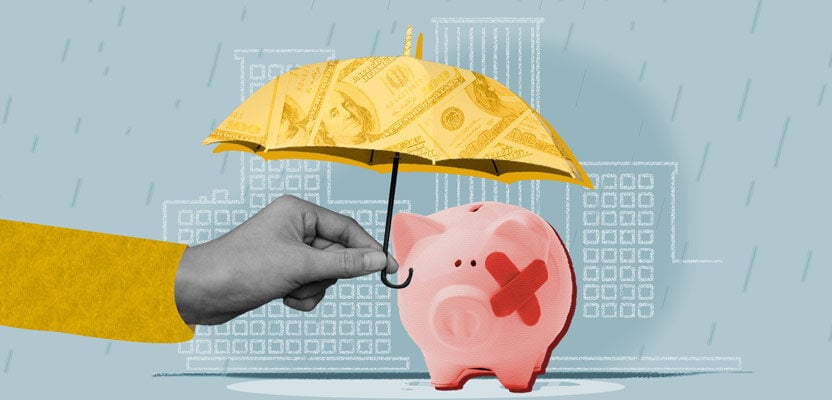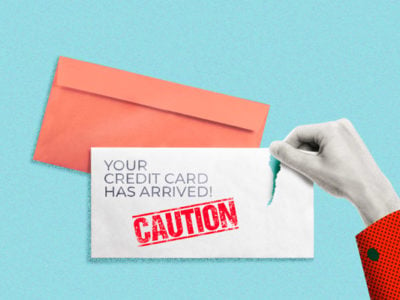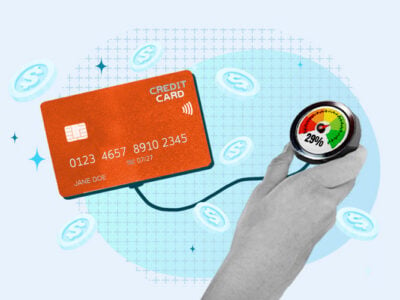If times are hard and you’re struggling to pay off your debts, it’s worth asking your lender for help. Some lenders, such as mortgage companies or credit card companies, offer assistance that could make it a lot easier to pay.
Before contacting your creditor, you should know how hardship programs work, what their advantages and disadvantages are, and what alternatives you have available to you.
Table of Contents
What is a hardship program?
A hardship program—also called a financial relief program or hardship assistance program—is a payment plan that you negotiate with your bank, credit card issuer, or lender. Its purpose is to make your regular payments more affordable if you’re having a tough time repaying debt.
Creditors don’t usually advertise that they offer hardship programs (for obvious reasons, they want most of their customers to just pay off their debts normally). However, this type of assistance can really help you if you’re in a spiral of bad debt.
How can a hardship plan help you?
Here are some of the advantages that hardship plans may offer: 1 2
- Fee waivers
- Reduced interest rates
- Lower minimum payments
- Payment postponement
- Access to additional loans and credit lines
- Suspension of collection activities
- Suspension of foreclosure
- Loan restructuring (changing the terms of a loan to make repayment easier)
- Short-term funding to help with running a business
- Other financing options
Hardship programs are available for various types of credit accounts (e.g., mortgages, credit cards, and personal loans). They’re usually only offered for short periods, such as 1–6 months. However, longer-term programs also exist, such as American Express’s 36- and 60-month programs. 2
Who is eligible for a hardship plan?
Life can be unpredictable, and hardship programs are specifically designed for unforeseeable circumstances that make it difficult to repay debt.
For example, the following circumstances might qualify you for hardship assistance:
- Loss of employment
- Change of income
- Natural disaster
- Family emergency
- Unplanned medical bills
- Divorce
However, it’s ultimately up to your lender whether they offer you hardship assistance. Contact your creditor for more information about what hardship options they offer and what their requirements are.
Where can I find a hardship program?
Some lenders advertise information about hardship programs, such as by mentioning them on their website, while others do not. If you’re unsure, contact your creditor directly for more information.
Hardship programs are especially common now because of the COVID-19 pandemic. For example, the two companies that own most of the mortgages in the US, Fannie Mae and Freddie Mac, have ensured that borrowers can get access to various types of hardship assistance, including deferment options, forbearance plans, and loan modification plans.
Many federal student loans are eligible for deferment and forbearance. Private student loan providers like Sallie Mae and SoFi also suggest contacting them if you’re going through financial hardship.
Major banks that offer hardship programs
Major credit unions that offer hardship programs
- Penfed Credit Union
- Members Cooperative Credit Union
- Century Federal Credit Union
- Consumers Credit Union
- Focus Federal Credit Union
These are just a few examples. If you’re using another lender, they might also offer a hardship program. Contact them directly to find out more.
How to apply for a hardship program in 4 steps
If you’re struggling to pay your bills, follow these four steps to enroll in a credit card hardship program:
1. Review your finances
Before you contact your card issuer, take time to review your finances. This will help you
determine what you can afford to pay. In turn, this will help your creditor understand your financial needs.
Begin by writing down all your necessary expenses and subtracting them from your income. The difference is how much disposable income you have, and it’ll give you an idea of how much you can afford to pay your lender.
If any of your circumstances are temporary, make a note of that. For instance, if you’ve had an unexpected medical bill or a seasonal reduction in your hours at work, your lender will want to know when you expect to finish paying off your bill or when you’ll be able to pick up more hours at work.
2. Ask your lender about their hardship programs
Once you know how much you can pay your creditor each month, contact them to say that you’re struggling to make payments and ask about alternative payment options.
Honesty is always best when telling your creditor about your situation. If your lender offers a hardship program, make a note of which circumstances qualify as hardship and what payment options are available. This will help you to decide what kind of terms you want to ask for and how to frame your request.
3. Review your lender’s terms
If your lender offers to enroll you in a hardship program, consider the terms of the program carefully before accepting them. Sign up only if you’re sure you’ll be able to afford the payments so that you don’t end up with late payments appearing on your credit report anyway.
If the terms your lender offers are still unrealistic for you, be upfront about that, while affirming your commitment to paying off what you owe. Explain what necessary expenses will make it impossible to make the payments they want and see if they’ll be flexible.
Once you’ve settled on manageable terms, ask for a copy of your new payment agreement in writing. Make sure to review the agreement and keep it somewhere safe for your records.
4. Prepare relevant documents and submit your application
Prepare your application and any relevant documents required to make your request for hardship assistance. Your lender will tell you what paperwork they need from you.
The documents may include a “hardship letter” explaining your situation. If you have to write a hardship letter, it should:
- Explain the circumstances of your hardship clearly and concisely
- Describe any steps you’ve taken to address your financial problems
- Cover your reasons for needing hardship assistance
Next, all you need to do is send your documents to your lender and wait for them to respond.
How to find your lender’s contact information
You can usually find your lender’s phone number, mailing address, and email by checking their website or doing an online search. You might also find this information on your monthly billing statements, your credit reports, or the back of your credit card. For federal student loans, you can check the Federal Student Aid website.
Potential drawbacks of hardship programs
Hardship programs can help you get out of debt that you otherwise wouldn’t have been able to pay off, but it’s important that you also consider their disadvantages before enrolling:
- Commitment required: Getting enrolled in a hardship program may require a bit of legwork, including gathering documentation (e.g., pay slips, divorce papers, medical bills, or bank statements). You’ll need to consistently make your agreed payments or else you may risk getting kicked out of the program. Your creditor may ask you to set up autopay to guarantee that you always pay them on time.
- Strain on your finances: Your lender may restrict your access to credit, such as by freezing or closing your credit card account or lowering your credit limit.
- Damage to your credit score: If your lender closes any of your accounts or reduces your credit limit, the amount of your available credit that you’re using (i.e., your credit utilization ratio) will go up, which is bad for your credit score.
- Difficulty qualifying for new credit: Your creditor may add a note to your credit reports saying that you’re in a hardship program. Although this won’t directly impact your credit score, it might deter other lenders from offering you credit in the future.
Alternatives to hardship programs
If you’re denied entry into a hardship program or it’s not suitable for your circumstances, then don’t worry. There are several alternatives you can consider.
Debt consolidation
If you’re dealing with multiple high-interest debts (such as from credit cards) and your credit is still in relatively good shape, you may be able to combine those debts into a single loan or credit card account with a lower interest rate.
This approach is known as debt consolidation, and there are a few different ways you can go about it:
- Debt consolidation loan: These are personal loans you take out and use to pay off your other debts. You’ll then only need to make payments toward the loan, usually for a fixed amount of time at a lower interest rate.
- Credit card balance transfer: If you have a credit card with a low interest rate and a high credit limit, or if you qualify for a new balance transfer credit card, then you can transfer all your debts to that single card. Some balance transfer cards come with an introductory 0% APR, although you’ll probably need to pay a balance transfer fee for each transfer.
- Home equity loan or HELOC: Home equity loans are a type of installment loan secured by your home. Home equity lines of credit (HELOCs) are similar, except they’re revolving credit accounts that you can tap into as needed. These accounts come with low interest rates, but it’s important to be aware that you risk foreclosure if you don’t repay your debt.
Bear in mind that debt consolidation is really only an option if you have a good credit score. If you currently have a bad credit score, then it’ll be difficult or impossible to qualify for a new low-interest credit account that you can transfer your debts to.
Debt settlement
If there’s just no way that you’ll ever be able to repay your debts, you can try negotiating a debt settlement with your creditor. This is an agreement between you and your lender where they agree to clear your debt in exchange for only a partial payment.
Although debt settlement can help you get out of debt, it’ll damage your credit score. For this reason, it shouldn’t be your first resort.
To negotiate a settlement with your creditor, simply use a debt settlement letter template to draft your proposal.

Debt Settlement Letter to Creditor
Use this debt settlement letter template to offer a creditor less than the amount they claim you owe. In exchange for your payment, this letter asks the creditor to agree to discontinue pursuit of the debt, and to label the debt as "paid in full" on your credit reports.
Debt management plans
If you can’t get enrolled into a hardship program on your own, then consider getting help from a nonprofit credit counseling agency. They may be able to set you up with a debt management plan (DMP), where your credit counselor negotiates with your lenders on your behalf to get you more affordable repayment terms.
However, bear in mind that you can only use a DMP for unsecured debts, so it won’t help if you’re struggling to pay your mortgage or auto loan. To get started, find a credit counselor near you by checking the National Foundation for Credit Counseling website.
Takeaway: Hardship programs are offered by some creditors to help you avoid default in times of financial distress.
- Hardship programs are designed for unexpected circumstances that make it difficult for you to keep up with repayments on your credit accounts or loans.
- You may be eligible for hardship assistance if you’ve faced an emergency, loss of income, or unexpected expenses like medical bills.
- Hardship programs can have many benefits, including fee waivers, reduced interest rates, deferred or reduced payments, and loan restructuring.
- Despite their benefits, hardship programs require commitment, and they may limit your access to credit or impact your credit score or eligibility for future credit accounts.
- If you’re denied access to hardship assistance, consider enrolling in a debt management plan (DMP), consolidating your debts, or negotiating a debt settlement.







